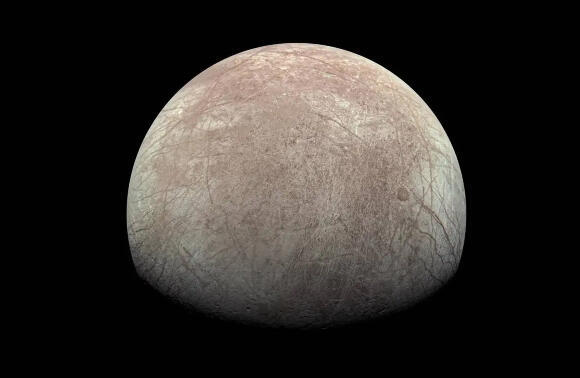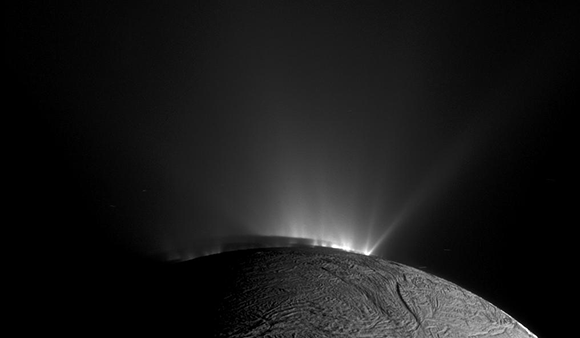Getting your Trinity Audio player ready...
According to a NASA-funded study, the icy moons Enceladus and Europa are promising targets for finding extraterrestrial life in our Solar System due to evidence of subsurface oceans beneath their icy crusts. These oceans could potentially harbor life if conditions like the presence of organic molecules (amino acids, nucleic acids) and energy sources are met.
While the surface and shallow subsurface are bombarded by ionizing radiation that could degrade chemical biosignatures, radiolysis experiments suggest that amino acids can survive just under the surface ice on Europa (almost 8 inches or 20 cm deep in specific regions) and Enceladus (less than a tenth of an inch deep), without needing to dig very deep.
2 View gallery


There's oxygen present, but in lesser amounts, The moon Europa, as captured during the pass of the spacecraft Juno in September 2022
(Photo: NASA/JPL-Caltech/SwRI/MSSS)
Amino acids degraded faster when mixed with dust but slower when originating from microorganisms, suggesting bacterial cellular material could protect amino acids from radiation-induced degradation. This defense can potentially prolong their survival. Rates of biomolecule degradation in silica-rich regions on Europa and Enceladus are higher, cautioning future missions on sampling locations.
While the surface is likely uninhabitable due to intense radiation, the subsurface oceans may support life with an energy source, and amino acids or compounds from these oceans could reach the surface through water plume activity or slow ice movement.
2 View gallery


Do these plumes contain evidence of life? The plumes emitted from the south pole of Enceladus in an image by the Cassini spacecraft from 2010
(Photo: NASA/JPL-Caltech/Space Science Institute)
Finding certain amino acids on Europa or Enceladus could indicate potential signs of life, as proteins made from amino acids are essential for life on Earth. The research used lower radiation doses to simulate conditions on these moons more accurately compared to previous experiments.
Enceladus is less exposed to cosmic radiation than Europa and is covered in a global ice crust with erupting geysers, making it easier to search for signs of life there with missions less affected by harmful radiation. Enceladus likely possesses internal energy due to the rapid decay of radioactive elements, contributing to its ongoing geological activity and youthful surface.
NASA has specific plans to search for life on Europa and Enceladus, including the Europa Clipper spacecraft scheduled to launch this year, and the study funded by NASA provides valuable information for these future life detection missions.
This article was written in collaboration with Generative AI news company Alchemiq
Sources: Gizmodo, Bullfrag, Fayerwayer, SciTechDaily, Futura-Sciences, Earth.com, Innovations-Report, SpaceDaily, Cosmos Magazine, Notiulti, Sci.News, Eurasia Review, EurekAlert, Phys.org.

